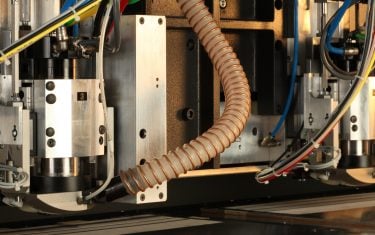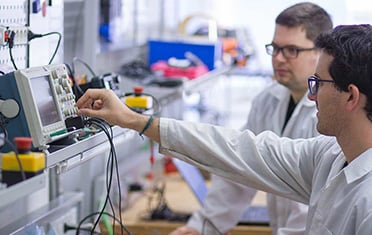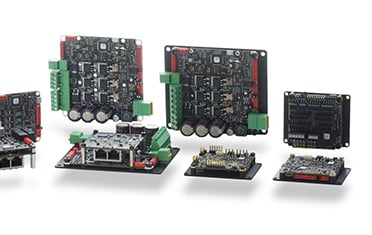Come funzionano i sensori induttivi
I sensori induttivi sono largamente utilizzati per la misurazione della posizione o della velocità, specialmente in ambienti proibitivi.Tuttavia, per molti...
Leggi la carta >Resolver, encoder ottici ed encoder induttiv
I resolver sono ottimi. Gli encoder sono ottimi. Ma quale è il dispositivo migliore? La risposta è che dipende dall'utilizzo...
Leggi la carta >Precisione, risoluzione, ripetibilità e via dicendo
Questo articolo parla dei trasduttori di posizione e spiega alcuni termini, i fattori più importanti per la specifica della strumentazione...
Leggi la carta >Confronto tra encoder ottici e induttivi
Disponendo di così tante e diverse tecnologie, per il progettista non è semplice fare una scelta ponderata. Questo articolo cerca...
Leggi la carta >Sensori di posizione – Una guida
Questo documento è per ingegneri, tecnici e studenti - pensato specialmente per chi ha bisogno, in poco tempo, di apprendere...
Leggi la carta >Confronto tra encoder capacitivi e encoder induttivi
Gli encoder capacitivi o induttivi possono sembrare, a prima vista, molto simili e gli aspetti che li differenziano possano apparire...
Leggi la carta >Sensori di posizione incrementale o assoluta
La maggior parte degli ingegneri ancora richiede i sensori di posizione incrementali perché ritiene che le versioni assolute siano troppo...
Leggi la carta >Housed versus Unhoused Encoders
Celera Motion offers two types of absolute inductive encoders (IncOders) in terms of housing design – housed and unhoused IncOder....
Leggi la carta >Power Budgeting and Motor Sizing for Battery Applications
This paper will provide the equations needed to calculate input power, output power, motor power losses, and efficiency for properly...
Read Paper >Air Bearing Spindle Installation & Operation
Celera Motion’s Westwind air bearing spindle technology is adopted in many specialized machine tools, robotic automation, and semiconductor processing applications,...
Leggi la carta >Motor Unit Conversions – What They Mean and How They are Used
In the world of motion control, units can vary significantly depending on drive type. The type of drive being used...
Read Paper >What Motor Torque Constant to Use for Drive Type – Theory and Application
The motor theory described in this paper is based on a brushless motor (BLAC or permanent magnet synchronous machines) configuration...
Read Paper >EtherCAT operating modes
This paper discusses the modes of operation of an EtherCAT based control system. Selecting the right mode of operation is...
Read Paper >Incremental Optical Encoder Technologies
Optical encoders can be incremental or absolute but the focus here is incremental. There are three primary implementations: transmissive, reflective...
Read Paper >Why Motor Constant Matters in Thermally Limited Applications
Temperature is one of the many limiting factors in the motor selection process that can be easily overlooked. This paper...
Read Paper >Comparison of Slotless and Slotted Motors
Permanent magnet brushless motors come in all shapes and sizes providing both rotary and linear motion. They are known for...
Read Paper >Efficiency and Power in Servo Drives
This paper explains the origins of power losses in a servo drive. The concepts of switching, conduction and quiescent losses...
Read Paper >Sizing a Shunt Resistor for Regenerative Braking
This paper discusses how to specify the shunt resistor used when a servo drive is in regenerative braking mode. The...
Read Paper >Clarifying Current Values and Naming for Celera Motion’s Ingenia Servo Drives
This paper discusses how the output current of servo drives is specified. Standard industry terminology is explained. The paper concludes...
Read Paper >What are Air Bearings?
What is an air bearing, how does it work, and where should it be used?
Leggi la carta >




























